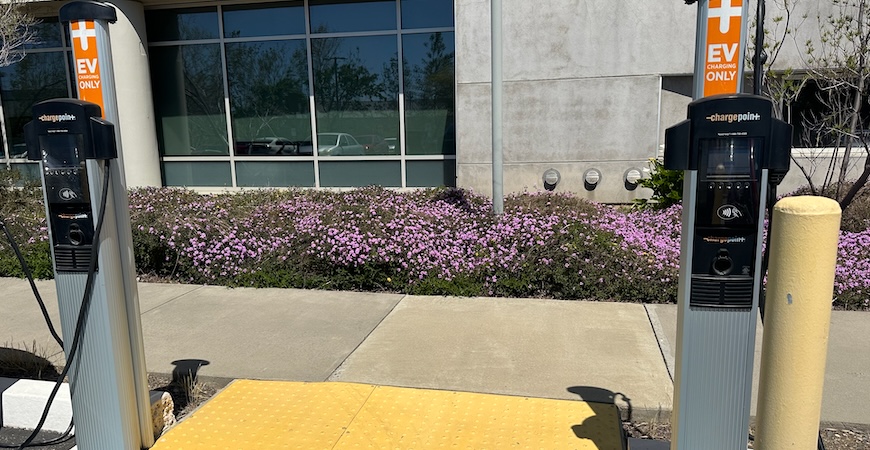
Many people with electric vehicles drive them to work during the day and then charge them overnight after returning home. But a simple reversal of that schedule could make it cheaper and easier to charge your electric car.
That was the conclusion reached by a team of UC Merced researchers, who recently published a paper in the Electricity Journal on "Aligning Electric Vehicle Charging with the Sun: An Opportunity for Daytime Charging?"
The paper, by mechanical engineering Ph.D. student Farzan ZareAfifi, mechanical engineering Professor Ricardo Pinto de Castro and electrical engineering Professor Sarah Kurtz, suggests that installing slow-charging infrastructure "in both residential and non-residential settings such as workplaces where cars are parked for several hours during weekdays, could make daytime charging more economically and practically attractive."
By charging during daylight hours, cars could draw energy directly from the sun, rather than charging a battery during the day, then using that battery to charge the car's battery during the night. Daytime charging, the researchers point out, would cut down on the need for expensive energy storage.
As more people shift away from gas-powered vehicles, the need for additional options is rising. California is predicted to need more than 2 million chargers by 2035 to support the targeted adoption of electric vehicles in the state. An earlier study Kurtz took part in showed that the ways people are using energy are changing so fast that planners can't keep up. The time is right for new approaches such as the daytime charging the researchers suggest.
There are some obstacles to the idea, however. Nonresidential charging stations can be pricey. The researchers advocate installing more lower cost "level 1" chargers at workplaces. Level 1 chargers are the slowest but most cost-effective, and sometimes the most convenient, for example when a level 1 charge is adequate, and a driver doesn't want to move their car after charging at a level 2 charger for a half-hour so someone else can use it.
In some areas such as California, electricity rates fluctuate on some days, with higher rates during the late afternoon and early evening hours when the demand on the grid is highest. This, in addition to the availability of relatively inexpensive at-home chargers, is why many people charge their cars during the off-peak overnight hours.
In recent years, the cost of solar electricity has dropped by roughly 90 percent, making it competitive with traditional electricity generation in many areas. Daytime electrical vehicle charging aligns solar generation and charging demand times, the researchers said. Daytime charging can both support solar industry growth and make electric vehicle charging more economically viable.
The researchers suggest updating time-of-use rates to encourage daytime use of electricity, which would encourage the adoption of more solar energy.
"Policymakers and industry stakeholders should consider policies that incentivize the expansion of robust daytime charging networks to supplement the policies that have successfully enabled the initial adoption," they wrote.




 Public Information Officer
Public Information Officer

